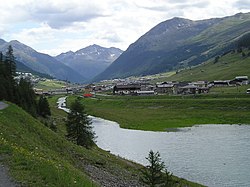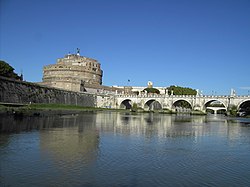
This is a list of rivers which are at least partially located in Italy. They are organized according to the body of water they drain into, with the exceptions of Sicily and Sardinia, which are listed separately. At the bottom, all of the rivers are also listed alphabetically.
Contents
- Characteristics of Italian rivers
- List of rivers in Italy over 150 km (93 mi)
- List of Italian rivers above 50 m3/s (1,800 cu ft/s)
- Draining into the North Sea
- Draining into the Black Sea
- Draining into the Adriatic Sea
- Tributaries of the Adige
- Tributaries of the Po
- Rivers draining into Lake Maggiore
- Rivers draining into Lake Como
- Draining into the Ionian Sea
- Draining into the Tyrrhenian Sea
- Tributaries of the Tiber
- Draining into the Ligurian Sea
- Rivers of Sicily
- Rivers of Sardinia
- Alphabetical list
- Notes
Italian rivers are generally shorter than those of other European regions because Italy is partly a peninsula along which the Apennine chain rises, dividing the waters into two opposite sides. The longest river originating in Italy is the Drava, which flows for 724 km (450 mi), while the river flowing the most kilometers in Italy is the 652 km (405 mi) long Po.
Rivers in Italy total about 1,200, [1] and give rise, compared to other European countries, to a large number of marine mouths. This is due to the relative abundance of rain events in Italy, and to the presence of the Alpine chain rich in snowfields and glaciers in the northern part of the country, in the presence of the Apennines in the center-south and in the coastal extension of Italy.












